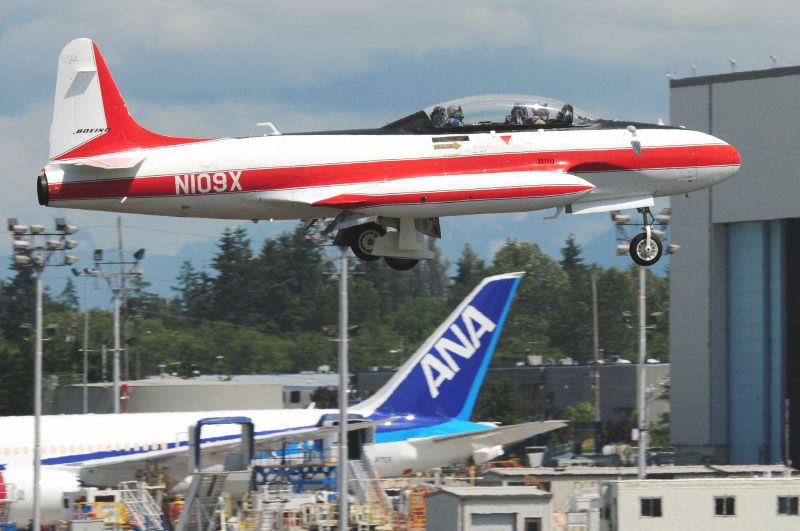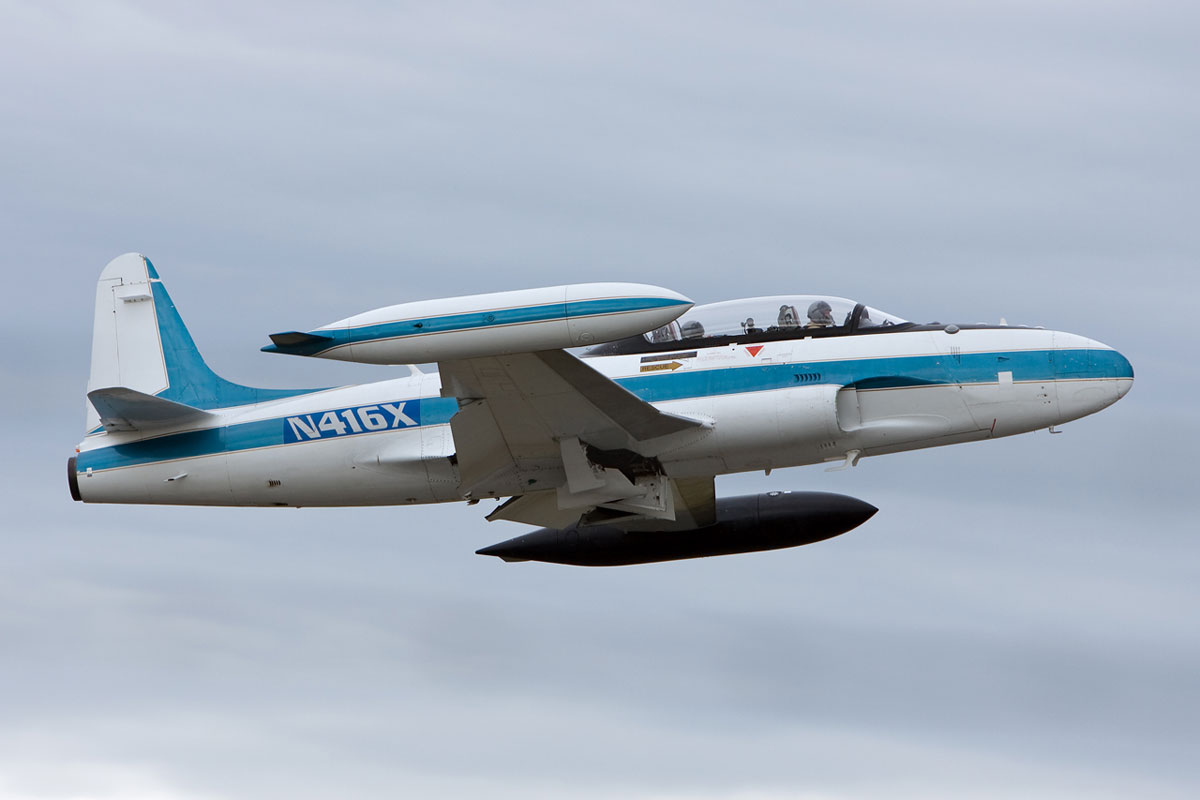Dreamliner á leið í loftið
Re: Dreamliner á leið í loftið
Hér sést lendingin > http://us.cnn.com/video/?/video/us/2009 ... nding.kiro
Annað sjónarhorn á flugtakið.
Annað sjónarhorn á flugtakið.
Icelandic Volcano Yeti
Re: Dreamliner á leið í loftið
já sama hér, þeir klárlega svigna alveg rosalega, sést líka þegar hún lendir og vængirnir leggjast niður.
nú er hausinn á mér á ímynda sér þessa vél í severe trubulance.... virkar þetta þá eins og dýna eða trambólín?
nú er hausinn á mér á ímynda sér þessa vél í severe trubulance.... virkar þetta þá eins og dýna eða trambólín?
- - Þegar þú flýgur á hvolfi er niður upp og upp kostar pening - -
- TT Raptor 90 - TT Raptor 50 - WestonUK MagnumR - SimProp Solution -
- TT Raptor 90 - TT Raptor 50 - WestonUK MagnumR - SimProp Solution -
Re: Dreamliner á leið í loftið
Carbon vél herrar mínir, talsvert teygjanlegra en ál, svo vélin er öll blinguð, vantar bara spinner felgur! 
Annars er óhætt að segja að þetta sé fjölþjóðavél!
[quote=http://en.wikipedia.org/wiki/Boeing_787]Boeing manufactures the 787's tail fin at its plant in Frederickson, Washington, the ailerons and flaps at Boeing Australia, and fairings at Boeing Canada Technology. For economic reasons, the wings are manufactured by Japanese companies in Nagoya such as Mitsubishi Heavy Industries, which also makes the central wing box.[26] This was a new and daring step for Boeing, which has historically guarded its techniques for designing and mass producing commercial jetliner wings.[citation needed] The horizontal stabilizers are manufactured by Alenia Aeronautica in Italy; and the fuselage sections by Global Aeronautica and Boeing's Charleston facility [27] in North Charleston, South Carolina (USA), Kawasaki Heavy Industries in Japan and Spirit AeroSystems, in Wichita, Kansas (USA).[28] The subcontractors are all designing with CATIA V5.[29]
The passenger doors are made by Latécoère (France), and the cargo doors, access doors, and crew escape door are made by Saab (Sweden). Japanese industrial participation is very important to the project, with a 35% work share, and many of the subcontractors supported and funded by the Japanese government.[30] On April 26, 2006, Japanese manufacturer Toray Industries and Boeing announced a production agreement involving $6 billion worth of carbon fiber. The deal is an extension of a contract signed in 2004 between the two companies and eases some concerns that Boeing might have difficulty maintaining its production goals for the 787.[3] On February 6, 2008, TAL Manufacturing Solutions Limited, a subsidiary of the Tata Group (India) announced a deal to deliver floor beams for the 787 from their factory at Mihan, near Nagpur, India to assembly plants in Italy, Japan and the United States.[31][32]
Messier-Dowty (France) builds the landing gear, which includes titanium forged in Russia, and brake parts from Italy,[33] and Thales supplies the integrated standby flight display and electrical power conversion system.[3] Honeywell and Rockwell-Collins provide flight control, guidance, and other avionics systems, including standard dual head up guidance systems. Future integration of forward-looking infrared is being considered by Flight Dynamics allowing improved visibility using thermal sensing as part of the HUD system, allowing pilots to "see" through the clouds.[3] Connecticut (USA)-based Hamilton Sundstrand provides power distribution and management systems for the aircraft, including manufacture and production of Generator Control Units (GCUs) as well as integration of power transfer systems that can move power from the Auxiliary Power Unit (APU) and the main engines to the necessary parts and machinery of the aircraft. Cold weather test of the APU took place in Alaska.[/quote]
Annars er óhætt að segja að þetta sé fjölþjóðavél!
[quote=http://en.wikipedia.org/wiki/Boeing_787]Boeing manufactures the 787's tail fin at its plant in Frederickson, Washington, the ailerons and flaps at Boeing Australia, and fairings at Boeing Canada Technology. For economic reasons, the wings are manufactured by Japanese companies in Nagoya such as Mitsubishi Heavy Industries, which also makes the central wing box.[26] This was a new and daring step for Boeing, which has historically guarded its techniques for designing and mass producing commercial jetliner wings.[citation needed] The horizontal stabilizers are manufactured by Alenia Aeronautica in Italy; and the fuselage sections by Global Aeronautica and Boeing's Charleston facility [27] in North Charleston, South Carolina (USA), Kawasaki Heavy Industries in Japan and Spirit AeroSystems, in Wichita, Kansas (USA).[28] The subcontractors are all designing with CATIA V5.[29]
The passenger doors are made by Latécoère (France), and the cargo doors, access doors, and crew escape door are made by Saab (Sweden). Japanese industrial participation is very important to the project, with a 35% work share, and many of the subcontractors supported and funded by the Japanese government.[30] On April 26, 2006, Japanese manufacturer Toray Industries and Boeing announced a production agreement involving $6 billion worth of carbon fiber. The deal is an extension of a contract signed in 2004 between the two companies and eases some concerns that Boeing might have difficulty maintaining its production goals for the 787.[3] On February 6, 2008, TAL Manufacturing Solutions Limited, a subsidiary of the Tata Group (India) announced a deal to deliver floor beams for the 787 from their factory at Mihan, near Nagpur, India to assembly plants in Italy, Japan and the United States.[31][32]
Messier-Dowty (France) builds the landing gear, which includes titanium forged in Russia, and brake parts from Italy,[33] and Thales supplies the integrated standby flight display and electrical power conversion system.[3] Honeywell and Rockwell-Collins provide flight control, guidance, and other avionics systems, including standard dual head up guidance systems. Future integration of forward-looking infrared is being considered by Flight Dynamics allowing improved visibility using thermal sensing as part of the HUD system, allowing pilots to "see" through the clouds.[3] Connecticut (USA)-based Hamilton Sundstrand provides power distribution and management systems for the aircraft, including manufacture and production of Generator Control Units (GCUs) as well as integration of power transfer systems that can move power from the Auxiliary Power Unit (APU) and the main engines to the necessary parts and machinery of the aircraft. Cold weather test of the APU took place in Alaska.[/quote]
Icelandic Volcano Yeti
Re: Dreamliner á leið í loftið
Fyrsta flugið er svo hér ef menn vilja skoða það > http://flightaware.com/live/flight/BOE1
Icelandic Volcano Yeti
Re: Dreamliner á leið í loftið
Eltivélarnar! Svo fór T-38 á undan hersingunni til að kanna aðstæður.
Svo er hægt að sjá myndir og vídeó hér > http://www.newairplane.com/


Svo er hægt að sjá myndir og vídeó hér > http://www.newairplane.com/


Icelandic Volcano Yeti
- Páll Ágúst
- Póstar: 646
- Skráður: 2. Maí. 2009 05:00:00
Re: Dreamliner á leið í loftið
Var einmitt að pæla í hvaða smáþotur þetta væru 
Re: Dreamliner á leið í loftið
Er ekki flest allt lítið við hliðina á stórum vélum, annars er þær nú gamlir vinir okkar. 

Mynd: Baldur Sveinsson frá Airliners.net

Mynd: Baldur Sveinsson frá Airliners.net
Icelandic Volcano Yeti
Re: Dreamliner á leið í loftið
ANA vélin sem er í bakrunninni á myndinni með N109X vélinni, er þetta ekki fyrsta Dreamliner(inn) sem verður afhent?

